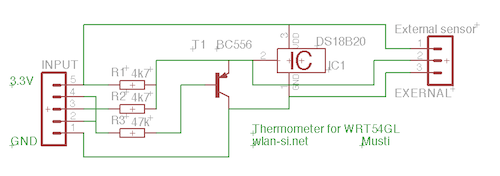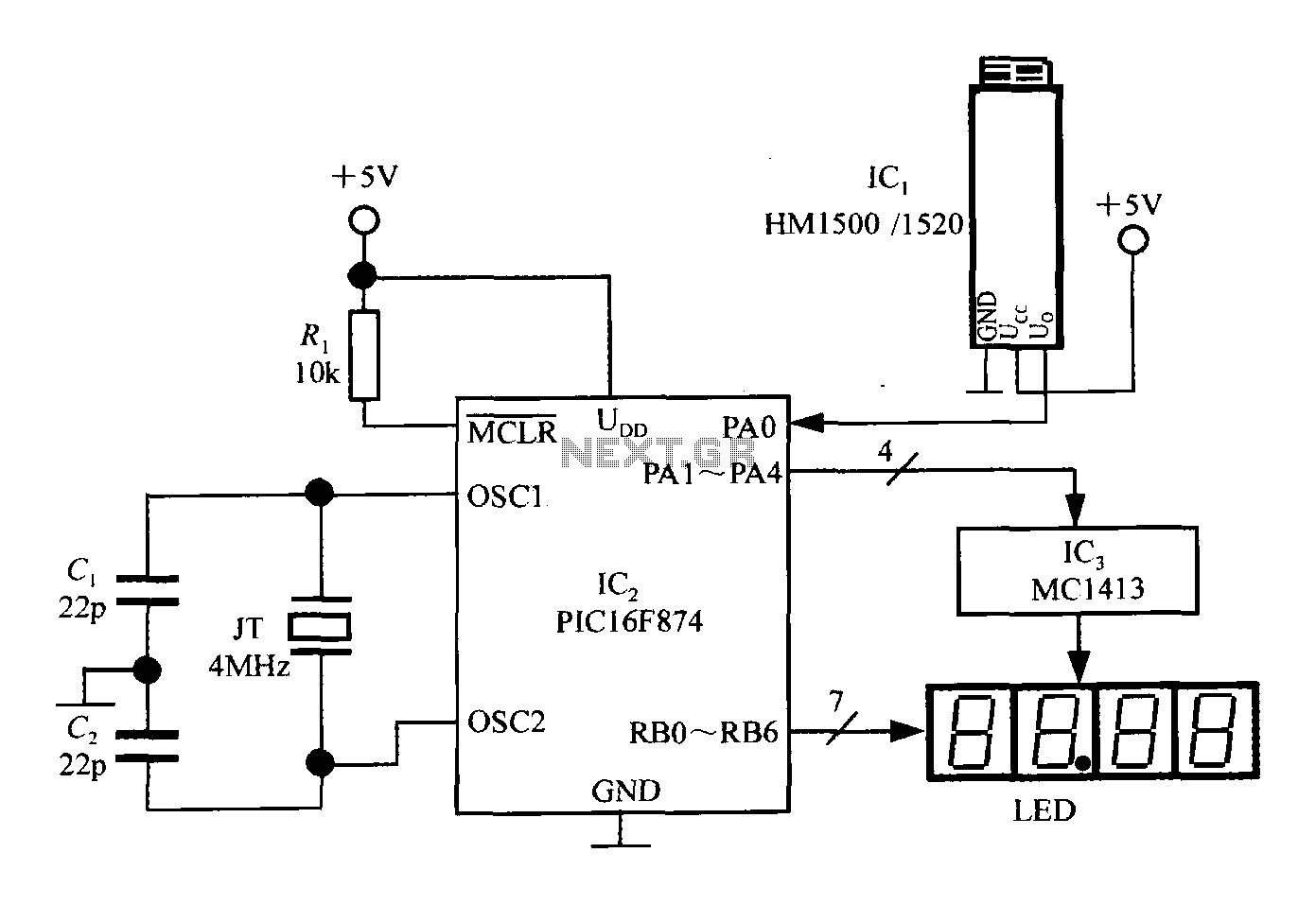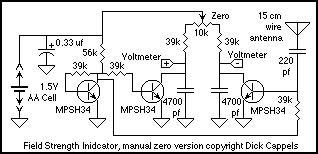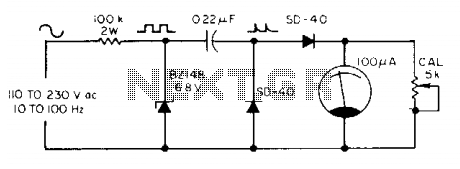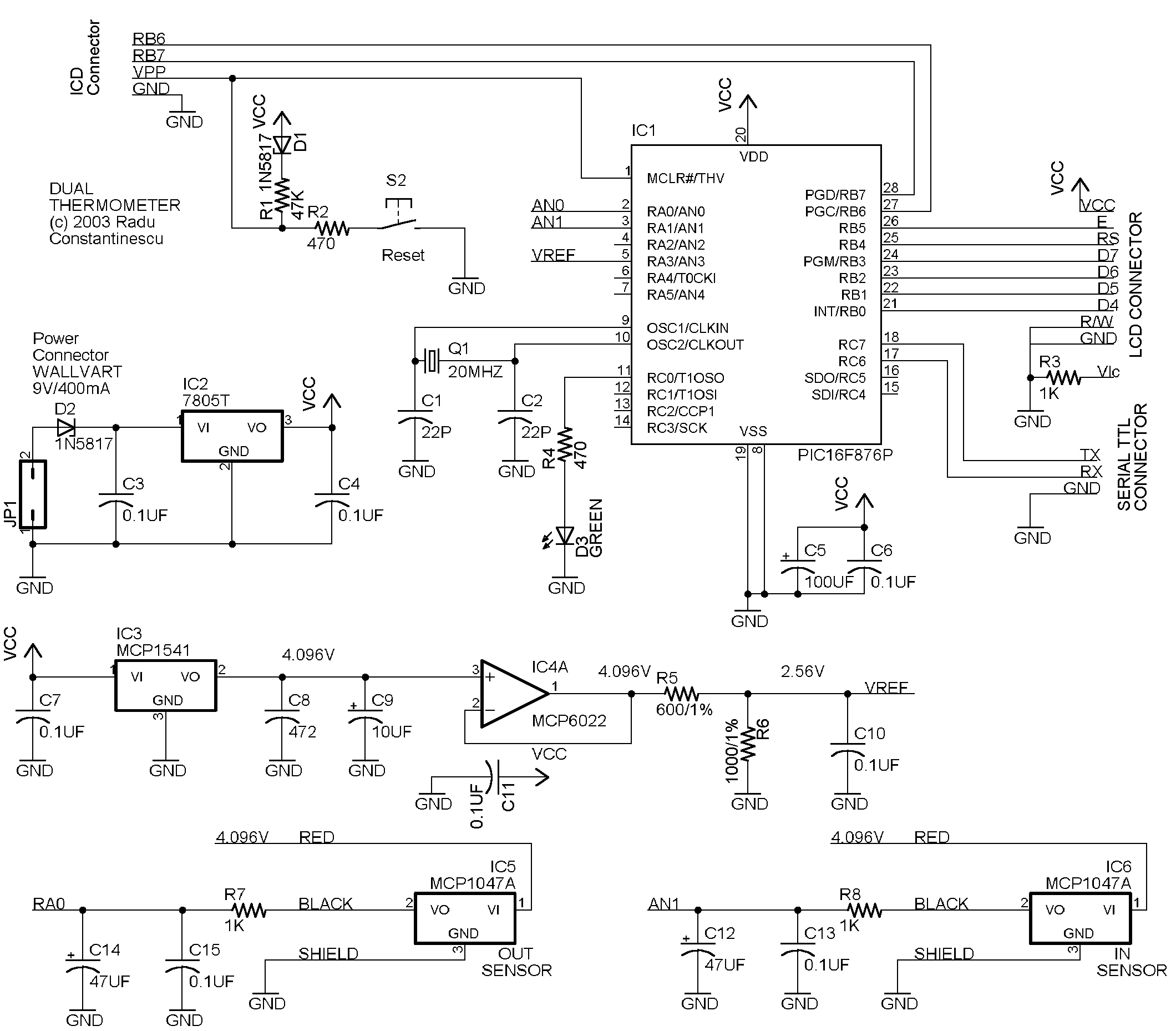
Suppressed zero meter
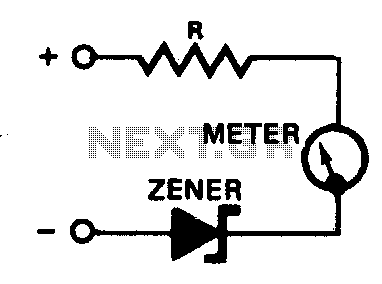
A zener diode placed in series with a voltmeter will prevent the meter from reading until the applied voltage exceeds the zener voltage. Thus, a 10-volt zener in series with a 5-volt meter will allow the condition of a 12 V car battery to be monitored with much greater sensitivity than would be possible with a meter reading 0-15 volts.
The described circuit configuration utilizes a zener diode to enhance the measurement capabilities of a standard voltmeter. In this arrangement, the zener diode is connected in series with the voltmeter. The zener diode is designed to conduct current only when the voltage across it exceeds its specified zener voltage. For instance, using a 10-volt zener diode alongside a 5-volt voltmeter allows for monitoring a higher voltage source, such as a 12-volt car battery, without exceeding the voltmeter's maximum rating.
When the applied voltage is below 10 volts, the zener diode remains in a non-conductive state, effectively blocking any current from flowing to the voltmeter. As a result, the voltmeter displays no reading, which is advantageous for preventing damage to the meter and ensuring accurate monitoring of voltage levels. Once the voltage surpasses the zener voltage, the zener diode begins to conduct, allowing current to flow through the voltmeter, which will then provide a reading that reflects the voltage above the zener threshold.
This configuration enhances the sensitivity of the measurement, as it enables the voltmeter to accurately read the voltage of the battery in a more limited range. Instead of a standard 0-15 volt range, the circuit effectively allows for precise readings at lower voltages, providing a clearer indication of the battery's condition. This is particularly useful in applications where monitoring battery health is crucial, as it allows for early detection of voltage drops that may indicate battery depletion or failure.
In summary, the integration of a zener diode in series with a voltmeter serves to extend the measurement range and improve the accuracy of voltage readings in specific applications, such as monitoring automotive batteries.A zener diode placed in series with a voltmeter will prevent the meter from reading until the applied voltage exceeds the zener voltage Thus, a 10 volt zener in series with a 5-volt meter will allow the condition of a 12 V car battery to be monitored with much greater sensitivity than would be possible with a meter reading 0-15 volts.
The described circuit configuration utilizes a zener diode to enhance the measurement capabilities of a standard voltmeter. In this arrangement, the zener diode is connected in series with the voltmeter. The zener diode is designed to conduct current only when the voltage across it exceeds its specified zener voltage. For instance, using a 10-volt zener diode alongside a 5-volt voltmeter allows for monitoring a higher voltage source, such as a 12-volt car battery, without exceeding the voltmeter's maximum rating.
When the applied voltage is below 10 volts, the zener diode remains in a non-conductive state, effectively blocking any current from flowing to the voltmeter. As a result, the voltmeter displays no reading, which is advantageous for preventing damage to the meter and ensuring accurate monitoring of voltage levels. Once the voltage surpasses the zener voltage, the zener diode begins to conduct, allowing current to flow through the voltmeter, which will then provide a reading that reflects the voltage above the zener threshold.
This configuration enhances the sensitivity of the measurement, as it enables the voltmeter to accurately read the voltage of the battery in a more limited range. Instead of a standard 0-15 volt range, the circuit effectively allows for precise readings at lower voltages, providing a clearer indication of the battery's condition. This is particularly useful in applications where monitoring battery health is crucial, as it allows for early detection of voltage drops that may indicate battery depletion or failure.
In summary, the integration of a zener diode in series with a voltmeter serves to extend the measurement range and improve the accuracy of voltage readings in specific applications, such as monitoring automotive batteries.A zener diode placed in series with a voltmeter will prevent the meter from reading until the applied voltage exceeds the zener voltage Thus, a 10 volt zener in series with a 5-volt meter will allow the condition of a 12 V car battery to be monitored with much greater sensitivity than would be possible with a meter reading 0-15 volts.
